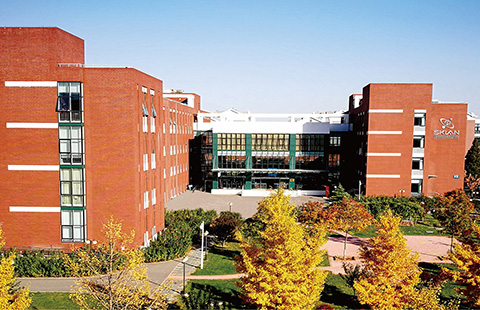Chinese scientists have independently bred a new cattle variety, the "Huaxi Cattle", which should help break the country's reliance on importing beef cattle for breeding, the Chinese Academy of Agricultural Sciences said on Tuesday.
The new variety was approved by the National Livestock and Poultry Genetic Resources Committee in December.
The research team led by CAAS's Institute of Animal Sciences bred the new variety in Wulagai district in the Inner Mongolia autonomous region. The success was 43 years in the making.
Last year, China imported 2.3 million tons of beef, accounting for a quarter of its consumption.
"The beef industry in China started late, and domestically-developed beef cattle varieties and beef quality are not able to meet the needs of consumers," Liu Xianwu, vice-president of the academy said during a summit on scientific innovation in livestock and poultry.
Seventy percent of the beef cattle used for breeding are imported, hindering the sustainable development of the industry, he said.
By 2025, 400 new variety bulls should be being produced a year, with the aim of supplying 70 percent of beef breed stock in the country.
Li Junya, a key member of the research team, said the performance of the new variety is advanced at the global level.
"Adult bulls weigh up to 900 kilograms and adult cows over 550 kg. The slaughter rate is 62.39 percent while the net meat rate is 53.95 percent," Li said.
An important agricultural tool during the agrarian age, cattle freed farmers from heavy farm work and greatly increased grain production.
However, with the rapid development of the economy and the increasing consumption of beef, scientists have been struggling to transfer their focus from developing methods of raising cattle to studying the modern beef industry.
Although China had a variety of cattle and breeding stock in the 1980s, meat production was not sufficient to cater to the domestic market because for a long time, the usefulness as farm animals was prioritized in breeding cattle.
At the moment, the country's several beef cattle varieties are not being promoted, contributing little to the development of the sector.
Since 1978, the Huaxi cattle variety has undergone improved hybridization, the creation of new genetic traits, and selective breeding before becoming the specialized beef cattle variety with a consistent body shape, outstanding production ability and stable genetic performance that it is today, Li said.
So far, there are 41 Huaxi cattle farms nationwide in Inner Mongolia and provinces such as Henan and Hubei, involving 60 breeding enterprises.
At present, breeding of the fifth generation of Huaxi cattle has begun and the variety's core breeding population will gradually expand in the next five to 10 years, Li said.
Last year, beef cattle sold for an average of 20,000 yuan ($2,962) each.
"By 2027, China is expected to independently control the core genetic resources of its beef cattle stock, ensuring the security of supply," he said.










